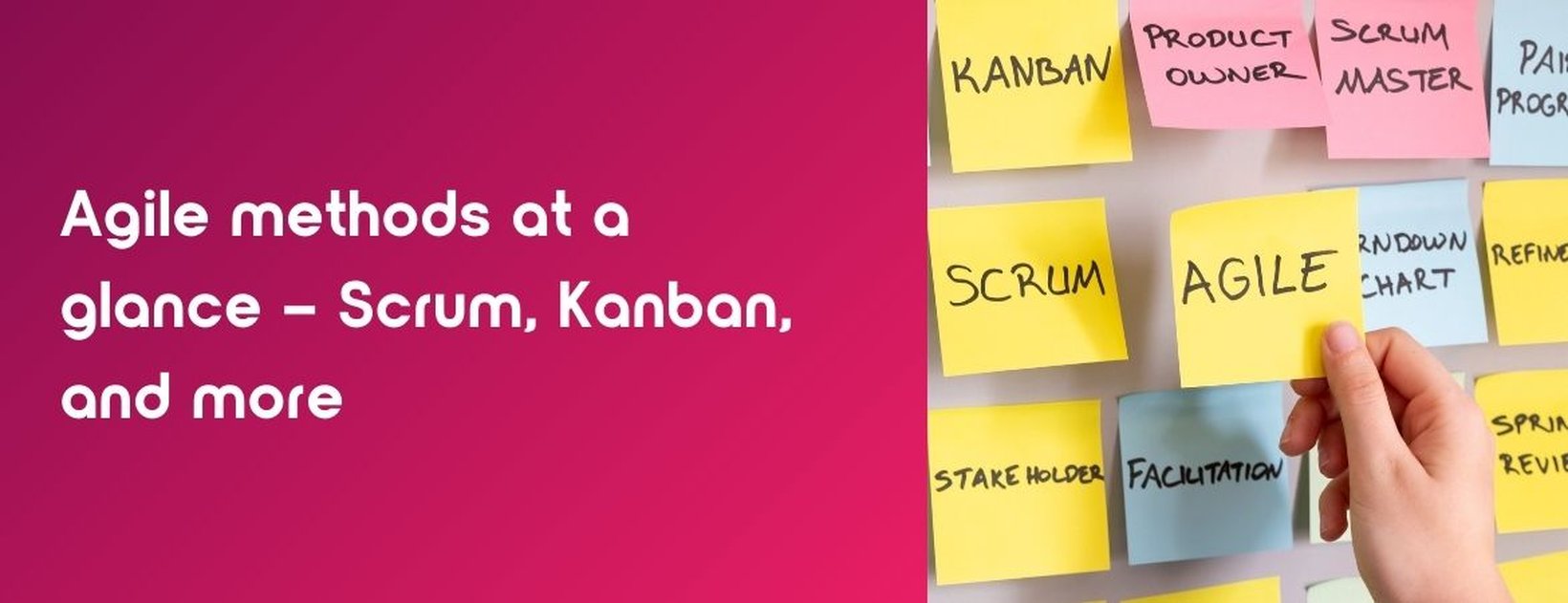Agile methods have become the standard in modern software development in recent years. But what does “agile” actually mean? And how do approaches like Scrum, Kanban, or Extreme Programming differ?
This article gives you a practical introduction to agile project management. We’ll show you the differences, fields of application, and help you find the right method for your team.
What does “agile” mean in a project context?
Agile principles and values
Agile methods are based on the Agile Manifesto. They emphasize collaboration, flexibility, and iterative development. Instead of rigid processes, the ability to adapt to change is central. The focus is on people: working software, close collaboration, and high customer satisfaction.
Difference from traditional methods
Traditional models like the Waterfall model follow a linear plan. Agile project management, on the other hand, works in short cycles (iterations) to react faster to feedback and continuously improve project success.
Scrum – the classic agile framework
Scrum is particularly suitable for complex projects with evolving requirements.
Roles in Scrum
● Product Owner: Responsible for the product vision and prioritization of requirements
● Scrum Master: Ensures process adherence and supports the team
● Development Team: Self-organized, cross-functional, and responsible for delivery
Core elements
● Sprint: One- to four-week cycle with a concrete goal
● Daily Standup: Short daily team meeting
● Sprint Review: Presentation of results and feedback from stakeholders
● Sprint Retrospective: Reflection for continuous improvement
More details can be found here.
Kanban – transparency and flow optimization
Kanban is suitable for teams with dynamic tasks and a high degree of variability. The goal is to make processes visible and improve them continuously.
Principles
● Visualization of the workflow with a Kanban board (e.g., Jira, Trello, Miro)
● WIP limits (Work in Progress): Prevent overload and bottlenecks
● Continuous delivery instead of sprints
● Regular retrospectives for process optimization
For further learning, see Kanban University.
Other agile methods in brief
● Extreme Programming (XP): Focused on software engineering practices such as Pair Programming, Test-Driven Development, and Continuous Integration.
● Lean Development: Originating from the automotive industry. Goal: eliminate waste and maximize customer value.
● Crystal: An adaptable framework depending on team and project size.
Which method is right for my team?
The choice of method depends on factors such as:
● Team size and structure
● Type and complexity of the project
● Agile maturity of your organization
In practice, many teams combine methods – for example, Scrum + Kanban = Scrumban. Frameworks like SAFe also integrate elements from multiple approaches.
For a requirements-focused perspective, check out IREB and our guide to Agile Requirements Engineering.
Conclusion: Agile means adaptability
Agile methods offer a wide range of opportunities to make projects more efficient, transparent, and customer-focused.
Our tip: Analyze your project environment, experiment with different approaches, and seek support from experienced Agile Coaches – for example, through Agile project coaching or training for Product Owners and Scrum Mastersoffered by trendig.
FAQs
What are agile methods?
Project management approaches that focus on flexibility, collaboration, and iterative work.
Scrum or Kanban – which is better?
It depends on your project. Scrum works with sprints, Kanban is flow-based.
For which projects are agile methods suitable?
Especially for dynamic and complex projects with uncertain requirements.
Can methods be combined?
Yes. Hybrid approaches such as Scrumban are common practice.
